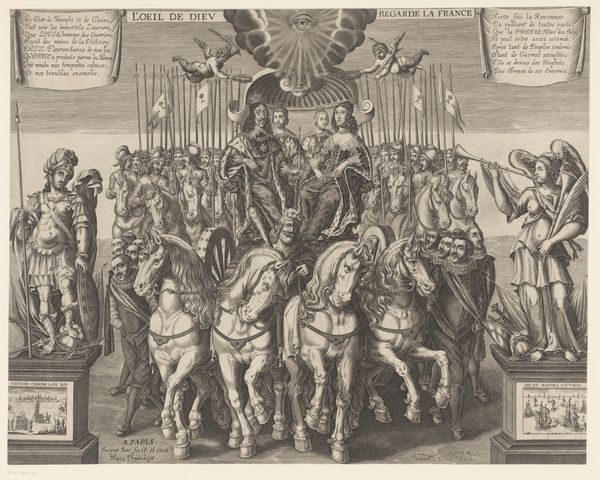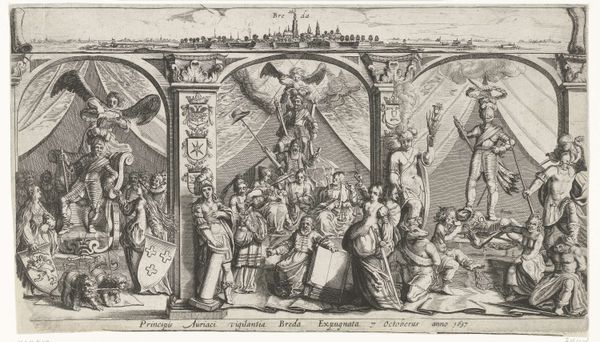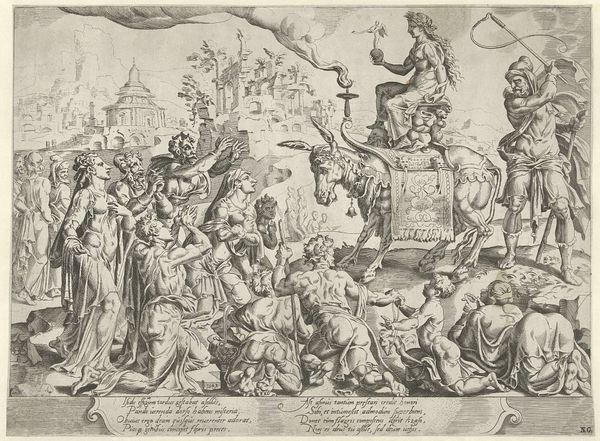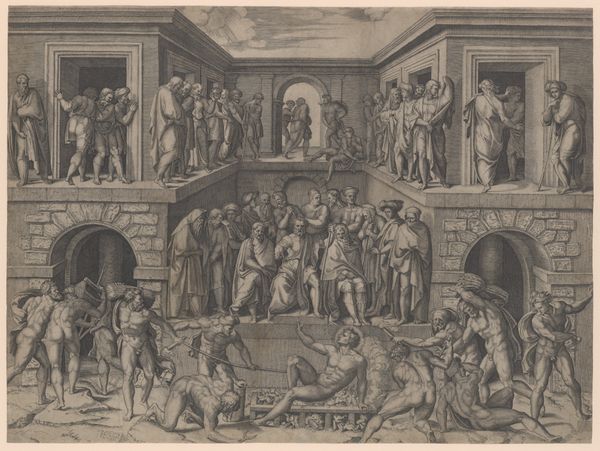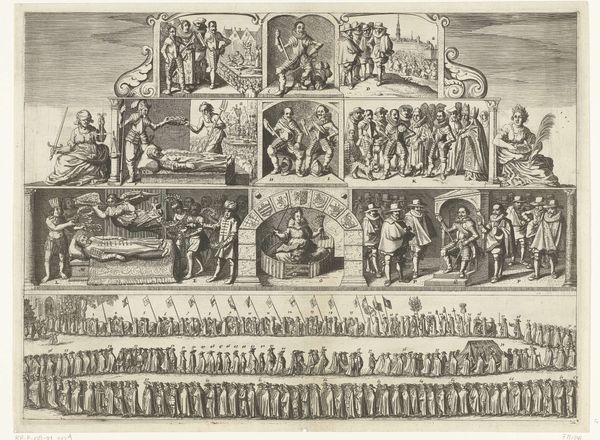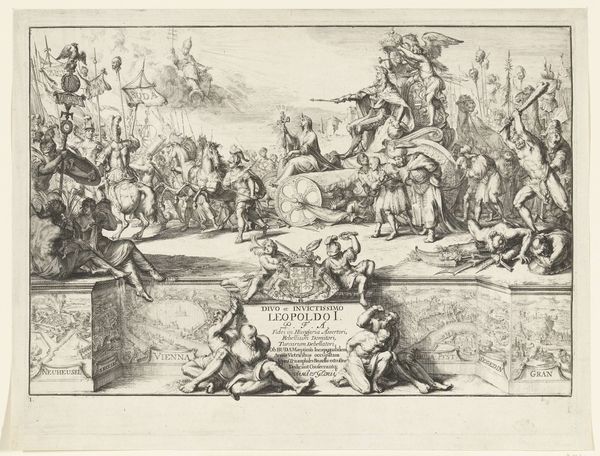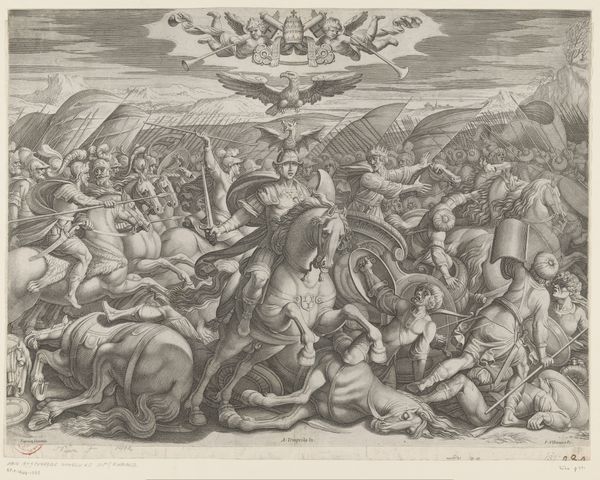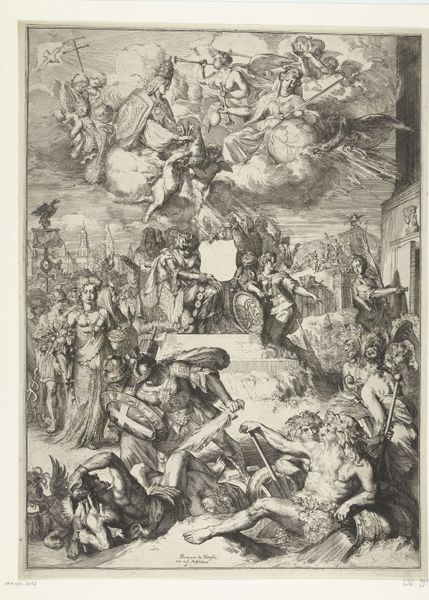
The Fall of the Rebellious Angels (a fresco, now whitewashed over, in the Church of St. Angelo in Arezzo) c. 19th century
0:00
0:00
Copyright: CC0 1.0
Editor: Here we have Conte Carlo Lasinio's "The Fall of the Rebellious Angels," a fresco, now whitewashed, documenting a scene of celestial warfare. What structural elements jump out at you when you consider this composition? Curator: Observe the organization: a clear hierarchy from divine stability above, to chaotic action below. The composition suggests a tension between order and disorder, reflecting the very subject matter. The line work is exceptionally intricate. Notice also the semiotic interplay of light and shadow, signifying good versus evil. What do you make of the dragon’s placement within the overall structure? Editor: It seems strategically placed to draw the eye, adding another layer of complexity to the composition. I see the dragon as the embodiment of the fallen angels, so it's right in the center. Curator: Precisely. The artist uses form to articulate the core narrative. The dragon serves as a focal point, visually anchoring the rebellion within the divine order, and enhancing thematic content. We can appreciate how technique amplifies and defines the subject.
Comments
No comments
Be the first to comment and join the conversation on the ultimate creative platform.



